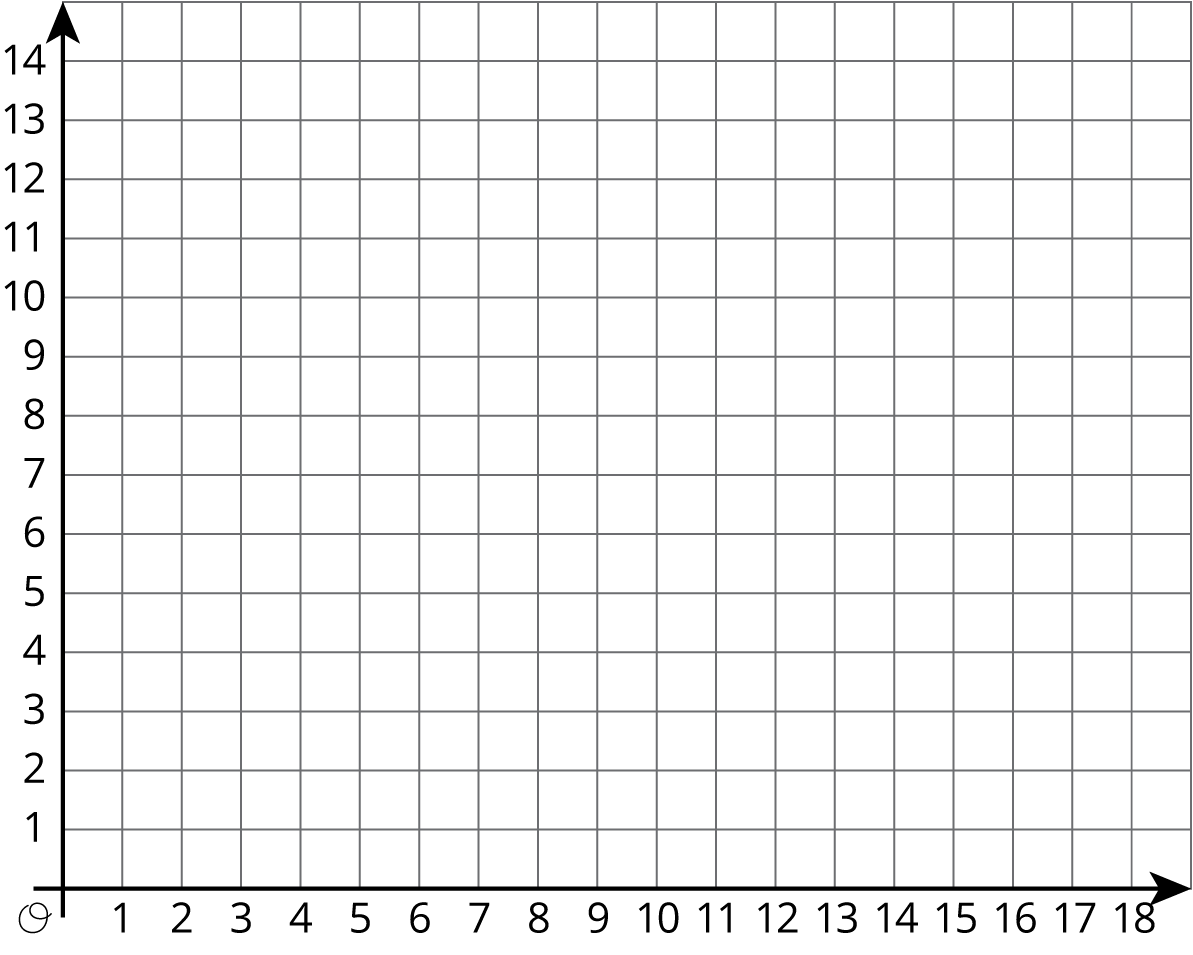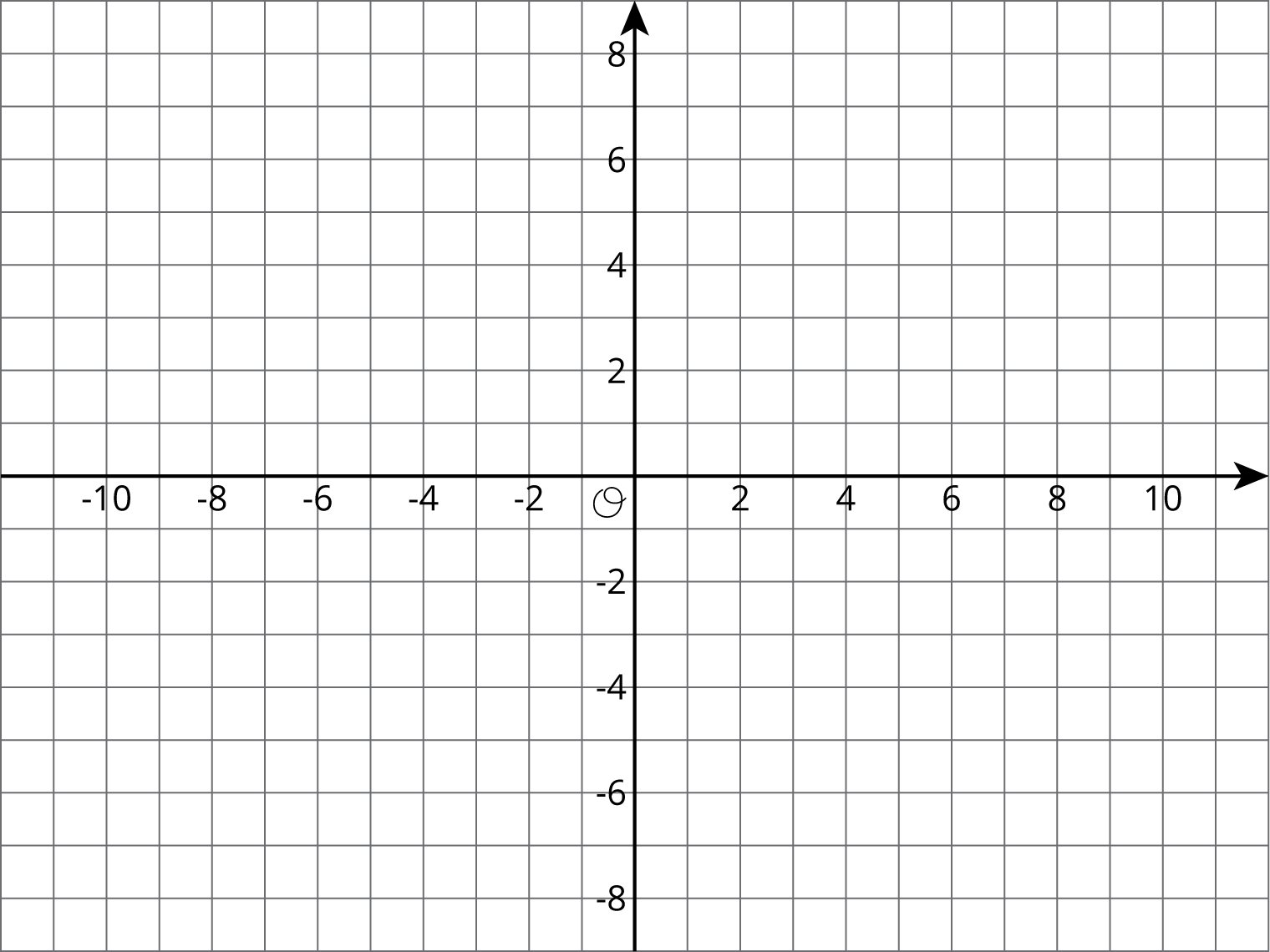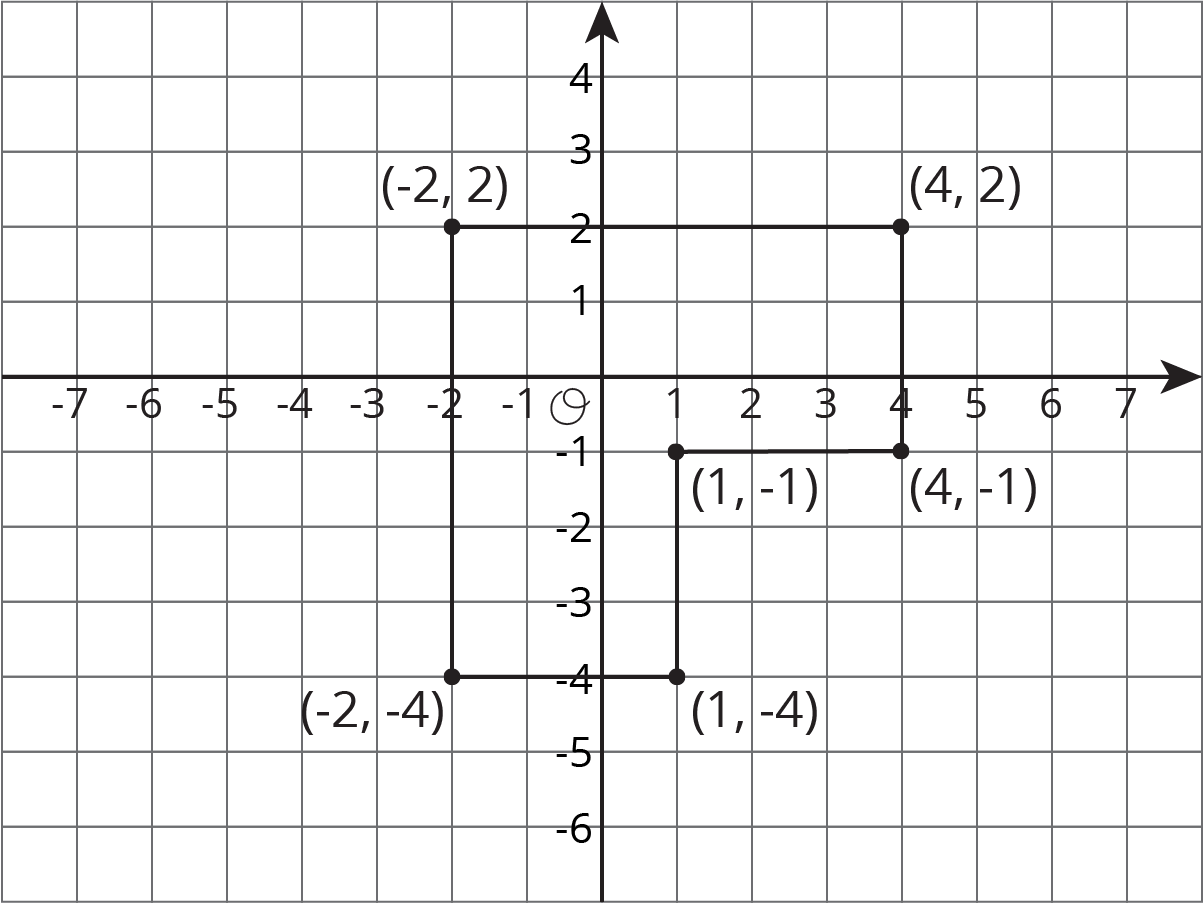Lesson 15
Shapes on the Coordinate Plane
15.1: Figuring Out The Coordinate Plane (5 minutes)
Warm-up
The purpose of this warm-up is for students to review properties of figures and polygons within the context of graphing points in the coordinate plane.
As the students work, monitor and select students with different figures, some that are polygons and some that are not, to share during the whole-class discussion. The focus of the whole-class discussion should be on the properties of a polygon.
Launch
Arrange students in groups of 2. Give students 2 minutes of quiet work time. After the 2 minutes, tell students to share their figure with their partner to check if it has at least three of the listed properties. Follow with a whole group discussion.
Student Facing
- Draw a figure in the coordinate plane with at least three of following properties:
-
6 vertices
-
1 pair of parallel sides
-
At least 1 right angle
-
2 sides the same length
-
- Is your figure a polygon? Explain how you know.
Student Response
For access, consult one of our IM Certified Partners.
Launch
Arrange students in groups of 2. Give students 2 minutes of quiet work time. After the 2 minutes, tell students to share their figure with their partner to check if it has at least three of the listed properties. Follow with a whole group discussion.
Student Facing

-
Draw a figure in the coordinate plane with at least three of following properties:
- 6 vertices
- Exactly 1 pair of parallel sides
- At least 1 right angle
- 2 sides with the same length
- Is your figure a polygon? Explain how you know.
Student Response
For access, consult one of our IM Certified Partners.
Activity Synthesis
Ask selected students to share their figure and its properties. Display these figures for all to see. After each student shares, ask the class if it is a polygon and how they know.
Defining characteristics of a polygon that should be emphasized during the discussion are:
- It is composed of line segments.
- Each line segment meets one and only one other line segment at each end.
- The line segments never intersect each other except at their endpoints.
- It lays flat on the coordinate plane.
15.2: Plotting Polygons (15 minutes)
Activity
The purpose of this task is for students to practice plotting points in the coordinate plane to make polygons.
Launch
Arrange students in groups of 2. Give students 8 minutes quiet work time, 4 minutes for partner discussion, followed by whole-class discussion.
Students using digital materials will plot points and create polygons with a digital applet.
Supports accessibility for: Organization; Attention; Social-emotional skills
Student Facing
Here are the coordinates for four polygons. Move the slider to choose the polygon you want to plot. Move the points, in order, to their locations on the coordinate plane. Sketch each one before changing the slider.
-
Polygon 1: \((\text-7, 4), (\text-8, 5), (\text-8, 6), (\text-7, 7), (\text-5, 7), (\text-5,5), (\text-7, 4)\)
-
Polygon 2: \((4, 3), (3, 3), (2, 2), (2, 1), (3, 0), (4, 0), (5, 1), (5, 2), (4, 3)\)
-
Polygon 3: \((\text-8, \text-5), (\text-8, \text-8), (\text-5, \text-8), (\text-5, \text-5), (\text-8, \text-5)\)
-
Polygon 4: \((\text-5, 1), (\text-3, \text-3), (\text-1, \text-2), (0, 3), (\text-3, 3), (\text-5, 1)\)
Student Response
For access, consult one of our IM Certified Partners.
Launch
Arrange students in groups of 2. Give students 8 minutes quiet work time, 4 minutes for partner discussion, followed by whole-class discussion.
Students using digital materials will plot points and create polygons with a digital applet.
Supports accessibility for: Organization; Attention; Social-emotional skills
Student Facing
Here are the coordinates for four polygons. Plot them on the coordinate plane, connect the points in the order that they are listed, and label each polygon with its letter name.
-
Polygon A: \((\text-7, 4), (\text-8, 5), (\text-8, 6), (\text-7, 7), (\text-5, 7), (\text-5,5), (\text-7, 4)\)
-
Polygon B: \((4, 3), (3, 3), (2, 2), (2, 1), (3, 0), (4, 0), (5, 1), (5, 2), (4, 3)\)
-
Polygon C: \((\text-8, \text-5), (\text-8, \text-8), (\text-5, \text-8), (\text-5, \text-5), (\text-8, \text-5)\)
-
Polygon D: \((\text-5, 1), (\text-3, \text-3), (\text-1, \text-2), (0, 3), (\text-3, 3), (\text-5, 1)\)

Student Response
For access, consult one of our IM Certified Partners.
Student Facing
Are you ready for more?
Find the area of Polygon D in this activity.
Student Response
For access, consult one of our IM Certified Partners.
Activity Synthesis
The purpose of the discussion is to emphasize the connection between numbers, the coordinate plane, and geometry. To highlight these connections, ask:
- “How is the coordinate plane related to the number line?” (The coordinate plane has two axes that are both number lines.)
- “How are we able to make polygons in the coordinate plane?” (The vertices of a polygon are plotted as points in the coordinate plane.)
Complete the connection by explaining to students that the coordinate plane allows us to describe shapes and geometry in terms of numbers. This is how computers are able to create 2 and 3 dimensional images even though they can only interpret numbers.
Design Principle(s): Cultivate conversation
15.3: Four Quadrants of A-Maze-ing (15 minutes)
Activity
The purpose of this task is for students to practice plotting coordinates in all four quadrants and find horizontal and vertical distances between coordinates in a puzzle. In past activities, students have been told the scale for the distance between grid lines, but here they must determine that each grid square has length 2 from the information given.
Launch
Arrange students in groups of 2. Tell students that they should not assume that each grid box is 1 unit. Give students 10 minutes quiet work time and 2 minutes for partner discussion. Follow with whole-class discussion.
Students using digital materials will be able to create a path through the maze by plotting points with an applet.
Supports accessibility for: Conceptual processing; Organization
Design Principle(s): Optimize output (for explanation); Maximize meta-awareness
Student Facing
-
The following diagram shows Andre’s route through a maze. He started from the lower right entrance.

- What are the coordinates of the first two and the last two points of his route?
- How far did he walk from his starting point to his ending point? Show how you know.
-
Jada went into the maze and stopped at \((\text-7, 2)\).
- Plot that point and other points that would lead her out of the maze (through the exit on the upper left side).
- How far from \((\text-7, 2)\) must she walk to exit the maze? Show how you know.
Student Response
For access, consult one of our IM Certified Partners.
Launch
Arrange students in groups of 2. Tell students that they should not assume that each grid box is 1 unit. Give students 10 minutes quiet work time and 2 minutes for partner discussion. Follow with whole-class discussion.
Students using digital materials will be able to create a path through the maze by plotting points with an applet.
Supports accessibility for: Conceptual processing; Organization
Design Principle(s): Optimize output (for explanation); Maximize meta-awareness
Student Facing
-
The following diagram shows Andre’s route through a maze. He started from the lower right entrance.

- What are the coordinates of the first two and the last two points of his route?
- How far did he walk from his starting point to his ending point? Show how you know.
-
Jada went into the maze and stopped at \((\text-7, 2)\).
- Plot that point and other points that would lead her out of the maze (through the exit on the upper left side).
- How far from \((\text-7, 2)\) must she walk to exit the maze? Show how you know.
Student Response
For access, consult one of our IM Certified Partners.
Activity Synthesis
The key idea is that it is possible to find distances and describe situations involving movement using the coordinate plane. This abstraction is important to appreciate because it means we can use numbers (in this case, pairs of numbers in the coordinate plane) to model situations that involve distance or movement. This will play a key role in later studies.To highlight these ideas, consider asking:
- How were you or your partner able to find the coordinates in the maze? Did you come up with any strategies or shortcuts?
- How did you find the distances that Andre and Jada traveled?
- What other situations involving movement could be represented with a coordinate plane?
Students may come up with examples like board games, maps, and perhaps even 3-dimensional examples.
Lesson Synthesis
Lesson Synthesis
Challenge students to create a drawing with a perimeter of 30 units using a continuous path of horizontal and vertical line segments. Ask students to identify the coordinates of vertices and justify that the perimeter is the given length. If time allows, arrange students in groups of 2 and ask them to draw their partner's figure in a coordinate plane with only verbal information and no coordinates. Students can check their drawing by asking for the exact coordinates. Ask students to explain why coordinates are useful for communicating information about flat space. Consider displaying student work for all to see throughout the rest of the unit. It may be interesting for students to see the variety of figures that all have a perimeter of 30 units.
15.4: Cool-down - Perimeter of A Polygon (5 minutes)
Cool-Down
For access, consult one of our IM Certified Partners.
Student Lesson Summary
Student Facing
We can use coordinates to find lengths of segments in the coordinate plane.

For example, we can find the perimeter of this polygon by finding the sum of its side lengths. Starting from \((\text-2, 2)\) and moving clockwise, we can see that the lengths of the segments are 6, 3, 3, 3, 3, and 6 units. The perimeter is therefore 24 units.
In general:
- If two points have the same \(x\)-coordinate, they will be on the same vertical line, and we can find the distance between them.
- If two points have the same \(y\)-coordinate, they will be on the same horizontal line, and we can find the distance between them.